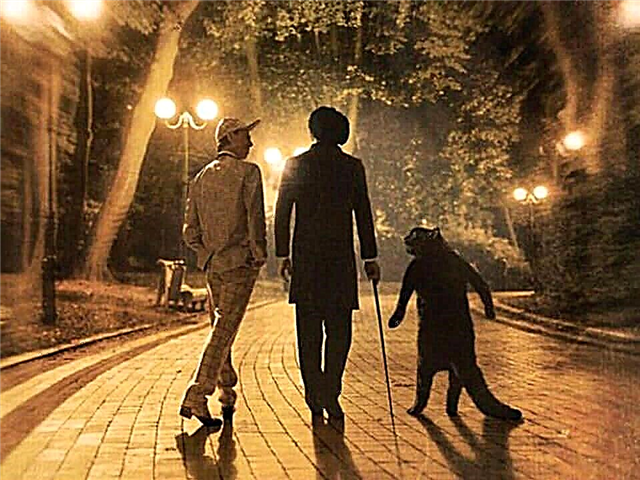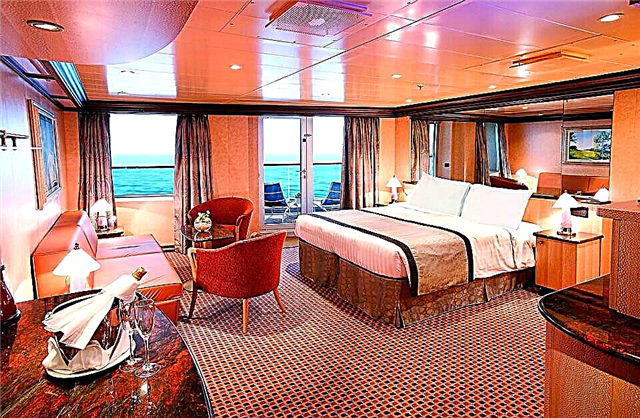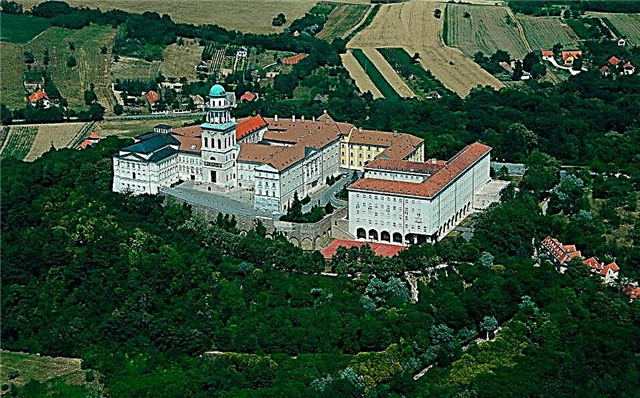Address: Russia, Moscow, Moscow Kremlin
Start of construction: 1776 year
Completion of construction: 1787 year
Architect: M.F. Kazakov
Coordinates: 55 ° 45'11.6 "N 37 ° 37'09.1" E
Cultural heritage site of the Russian Federation
Content:
The Senate Palace is almost completely hidden behind the wall of the Moscow Kremlin. But when parades are broadcast from Red Square, cameras now and then snatch out its rounded dome with a flag. The palace facade stretches between the Nikolskaya and Senate towers. The representative building is very beautiful, and its history goes back almost 250 years. Currently, the working residence of the President of the country is located here.

A bird's eye view of the Senate Palace
The history of the construction of the palace
During the reign of Catherine, many magnificent palace buildings and estates appeared in Russia. The empress ordered one of the palaces to be built in the very heart of Moscow. It was necessary for holding meetings of the Governing Senate.
The Senate had the status of the highest organ of state power in the country, it was directly subordinate to the emperor, and its members were also appointed by the sovereign. This tradition was born during the time of Peter I, who became the founder of the first High Senate.
Under Catherine II, the Senate was divided into 6 departments, which were in charge of the rights of the nobles, internal, political, military and naval affairs, and also resolved judicial issues. In addition, the members of the Senate ruled the provinces that were in a special position - Little Russia, Livonia, Estland, Narva and the Vyborg province. During the reign of Catherine II, the Senate was reformed many times, and the Empress either endowed it with new rights or took them away.
The construction of a building for the residence of the highest state body was an extremely responsible matter, so Catherine II entrusted the preparation of the project to two eminent Russian architects - Matvey Fedorovich Kazakov and Karl Ivanovich Blank. To clear the site for construction, the empress made a deal with the princes Baryatinsky and Trubetskoy and bought out land plots in the Kremlin from them.
The choice of Catherine II fell on the project prepared by M.F. Kazakov. The talented architect skillfully inscribed the future building between the Kremlin wall, the territory of the Chudovaya monastery and Zeikhhaus. He decided to erect a new building in the tradition of classicism, which was only coming into fashion at that time and was gradually replacing the magnificent baroque. K.I. The form also did not remain without work. To use his great practical experience, the Empress appointed this architect as a consultant for the construction of the Senate Palace. For a number of reasons, the construction work took more than 10 years - they were completed by 1787, and the interior decoration of the palace was completed in 1790.

Senate Palace from the side of Ivanovskaya Square
Palace in the XIX-XX centuries
In 1812, the city fell under the power of Napoleon. Retreating from Russia, the French troops took with them everything they could take away. By order of their emperor, they removed from the palace an equestrian sculptural group depicting George the Victorious, and took it to their homeland as a trophy.
In peacetime, the palace was repaired and various judicial bodies were housed in it. In addition, an architectural school was located here until 1865. Therefore, throughout the 19th century, the palace complex was called “the building of public places”.
The rounded dome of the palace was decorated with a pillar with the inscription "law", as well as the imperial crown. After the establishment of Soviet power, all the tsarist symbols were dismantled, and a flagpole was installed on the high dome. Since then, the state flag has always been flying over the Senate Palace. Under the USSR, it was a red cloth, and since 1991 one can see the Russian tricolor, which is familiar to us, above the dome.
In the 1920s, there was an office inside the palace where V.I. Lenin. The building also served as the seat of the government of the young country of Soviets. The majestic Catherine Hall was renamed Sverdlovsky, and the most significant prizes and awards in the country were presented there. The palace also gathered party plenums and held meetings of the Politburo of the Communist Party of the Soviet Union.
Today, the building houses the offices in which the president of the country works, and the rotunda on the 3rd floor is given over to an extensive presidential library. The residence is divided into two parts. These are the premises where the president and his aides work, and representative premises and halls.
Since 1955, a museum was opened in the palace, the main exhibit of which was the study of V.I. Lenin. During the time it was open, the museum was visited by about two million people. Today, an exact copy of this office is housed in the Gorki Leninskiye memorial complex, which is located in the near Moscow region.

Architectural features
The Senate Palace is the largest building built according to the project of M.F. Kazakov. As conceived by the architect, the large building was intended to become a symbol of the law, the ideals of civil society and the power of Russian justice. That is why the author of the project kept the palace in the strict traditions of classicism. When designing a high, rounded dome, the architect strove to make Red Square even more expressive. And, I must say, his idea was quite a success.
In the plan, the palace building is a triangle. Two transverse hulls divide the interior into three similar parts. The austere external facades have protrusions characteristic of classicism - projections, which highlight the Doric pilasters. The basement of the palace and its first floor are decorated with expressive rustication, which gives the building austerity and solidity. The corners of the building are also original. They are cut and decorated with projections in the form of triumphal arches. The same motive finds repetition in the center of the three facades of the palace.
From the Senate Square, through the triumphal arch, you enter the courtyard of the palace. The solemn entrance is decorated with a strict portico and a triangular pediment, and also decorated with Ionic columns. Above this arch is the dome of one of the representative rooms, which is called the "Oval Hall".
Catherine Hall
The compositional core of the palace is the spacious Catherine's Hall or, as it is also called, the "White" Hall. It was created to hold representative assemblies of the nobility, and today there are solemn events in which the president takes part.

Senate Palace from the courtyard
The scale of the Catherine Hall is impressive. It is considered one of the largest in the city. The dome rises 29 m above the floor, which corresponds to the height of a 10-storey building. On the walls between the window openings, you can see exquisite decor - graceful stucco molding, medallions and sculptural images.
The walls of the hall are decorated with plaster bas-reliefs depicting the great dukes and kings. These are copies from the originals created by the famous Russian sculptor Fedot Ivanovich Shubin. The original Shuba bas-reliefs are made of marble. They decorate the facades of the Kremlin Armory.
In the piers between the columns there are expressive high reliefs, masterfully made by one of the founders of decorative and monumental sculpture in Moscow - Gabriel Tikhonovich Zamaraev. The plots for them were allegorical scenes described in the works of G.R. Derzhavin and N.A. Lvov. These high reliefs depict the ideals of the Enlightenment, consonant with the reign of the Russian Empress Catherine II.
To get to the Catherine Hall, guests walk along the wide, luxuriously decorated Shokhin Staircase. It is made of colored marble and granite, the railings are made of wood, the stairwells are decorated with sculptures depicting the goddess of justice, and floor lamps are installed at the base of the balustrade.
How to get there
The Senate Palace is located in the northeast of the Kremlin territory, next to the Arsenal. A large building occupies a place between the Senate Square and the wall behind which the Red Square is located.

View of the palace from Red Square
The Moscow Kremlin can be reached on foot from the Aleksandrovsky Sad, Biblioteka imeni Lenin and Borovitskaya metro stations. To get to the Senate Palace, you need to walk along the territory of the Alexander Garden, pass the Kutafya Tower, Trinity Bridge and walk past the State Kremlin Palace.











